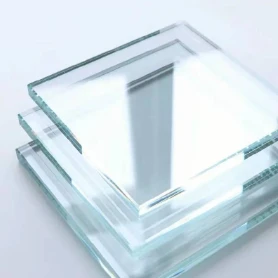Clear and frosted glass each hold unique characteristics and uses within architecture and interior design, and selecting the right type for your project can significantly impact both aesthetics and functionality. Our experience in working with both clear and frosted glass has highlighted their distinctive properties and optimal applications.

Clear glass, renowned for its timeless appeal, offers unparalleled transparency and is perfect for spaces requiring unobstructed views. It is commonly utilized in areas where visibility is crucial, such as windows, storefronts, and sliding doors. When designing spaces meant to harness natural light, clear glass plays an instrumental role. It not only illuminates interiors but also connects them to the outside environment, creating a sense of openness and continuity.
The versatility of clear glass extends beyond natural lighting. From an expert perspective, clear glass is ideal for modern aesthetics that seek a minimalist approach. Its ability to complement various design styles—whether industrial, contemporary, or traditional—makes it a versatile choice. Moreover, advancements in technology have introduced options such as tempered and laminated clear glass, which enhance safety and durability, expanding its usability in many commercial and residential settings.

In contrast, frosted glass provides privacy while allowing light to permeate a space. Its translucent nature makes it the perfect candidate for areas where privacy is needed without sacrificing luminosity. Consequently, frosted glass is frequently used in bathrooms, conference rooms, and entryways. From our authoritative experiences with installations, frosted glass is unmatched in its ability to diffuse light, creating a soft, even glow that reduces glare and shadows—a feature especially beneficial in workspaces and studios.
clear and frosted glass
Furthermore,
frosted glass offers myriad design possibilities. It is available in varying degrees of translucency and can be customized with patterns or colors to suit specific aesthetic needs. This dimension of personalization has made frosted glass a favorite among interior designers who wish to integrate unique artistic elements into their projects. Expert craftsmanship is vital when working with frosted options to ensure consistency and quality in the finish, which directly impacts the glass’s effectiveness and appeal.
For those considering eco-friendly options, both types of glass have sustainable benefits. Clear glass's ability to maximize natural lighting can reduce the dependence on artificial lighting, resulting in energy savings. Likewise, frosted glass can aid in maintaining indoor temperature by diffusing heat, which is particularly advantageous in climate-controlled environments.
The decision between clear and frosted glass ultimately depends on the specific needs of a project. Builders and designers we’ve worked alongside often balance privacy, light transmission, and design aesthetics when selecting the appropriate glass type. Considering the desired atmosphere, functionality, and privacy levels is essential to achieving the perfect balance. In doing so, you leverage the unique strengths of each glass type to enhance both the visual and functional aspects of a space.
Trust in selecting the right glass comes from understanding these nuanced differences and allowing both expertise and experiential insights to guide choices. Whether aiming for transparency and openness or privacy and elegance, each glass type provides distinct advantages that, when used effectively, elevate the design and utility of any space.



